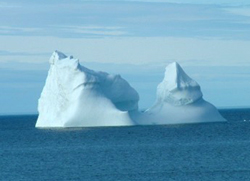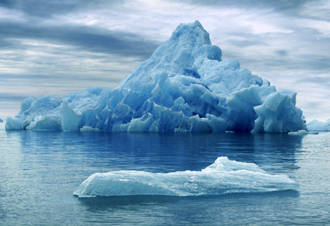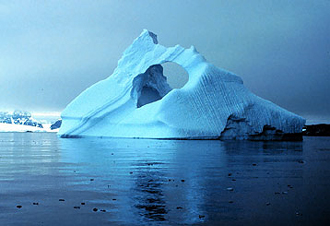 |
 |
 |
 |
| Volume
3 - Issue 12 DECEMBER 2005 |
|
Return to the Feature: God, Man And Water ICEBERGS
They form mostly during spring and summer when warmer weather helps in ice sheet break up. In the Northern Hemisphere, about 10,000 icebergs are produced every year from the West Greenland glaciers. About 400 of them move into the North Atlantic shipping lanes, where they are a hazard to ships.
Icebergs of the Arctic vary in size from about the size of a piano to large ones that are roughly 50 metres tall and 200 metres long. The famous sinking of the Titanic was caused by a collision which the ship had with a huge iceberg.
The icebergs of the Antarctic are not only far more numerous compared to those in the Arctic, but are also of enormous dimensions. About 93% of the world’s mass of icebergs is found surrounding the Antarctic. Usually, 1/8th of an iceberg is above the surface of seawater. It is mostly made up of snow, and is not very compact. The ice in the core, on the other hand, is compact, heavy and has a temperature of about minus 20 degress Celsius. Return to the Feature: God, Man And Water
|
| You can write to us at : h2h@radiosai.org |
Vol 3 Issue 12 - December 2005
|
Best viewed in Internet Explorer - 1024 x 768 resolution. |
DHTML Menu by Milonic. |
 An iceberg is a floating mass of freshwater ice that has broken from the seaward end of a glacier or polar ice sheet. Icebergs are usually found in open seas, especially around Greenland and Antarctica.
An iceberg is a floating mass of freshwater ice that has broken from the seaward end of a glacier or polar ice sheet. Icebergs are usually found in open seas, especially around Greenland and Antarctica. 
